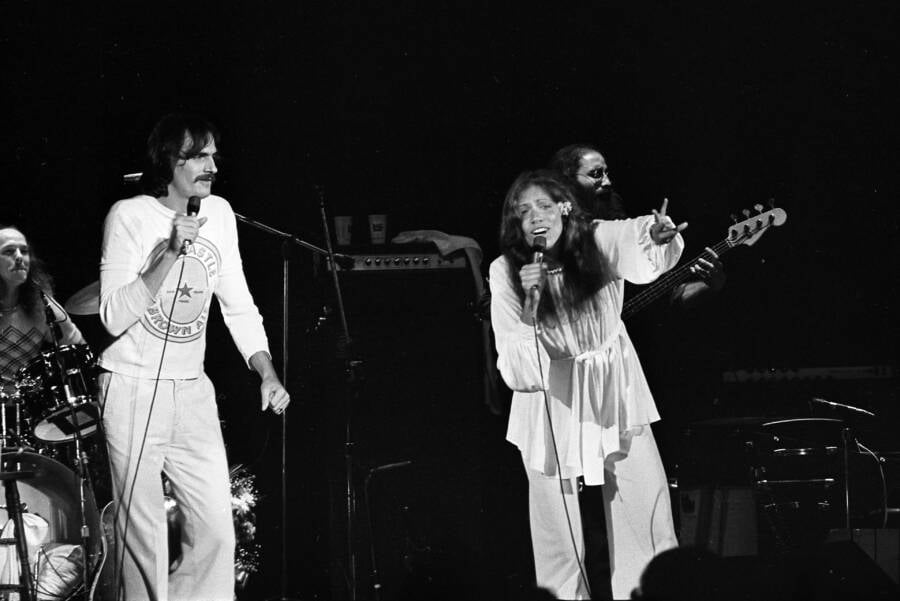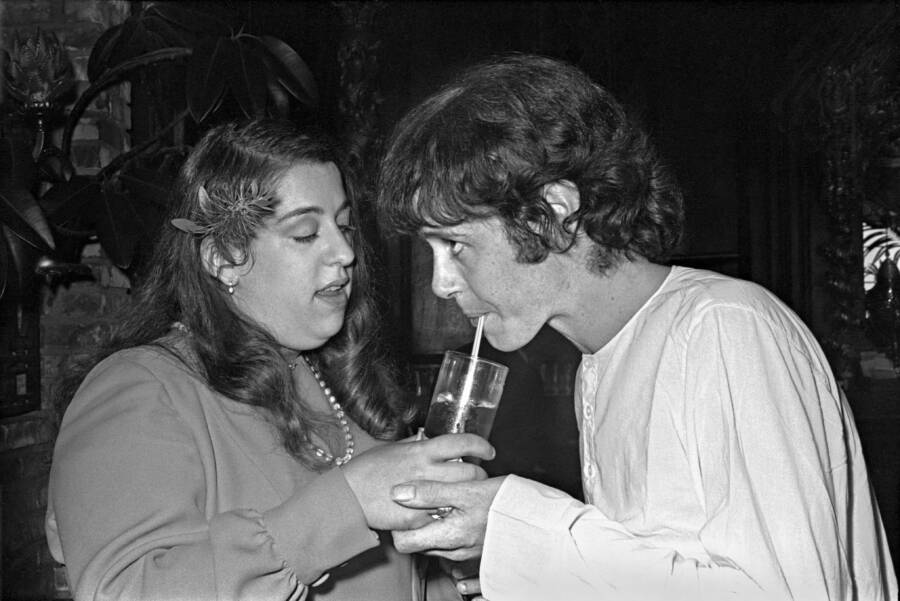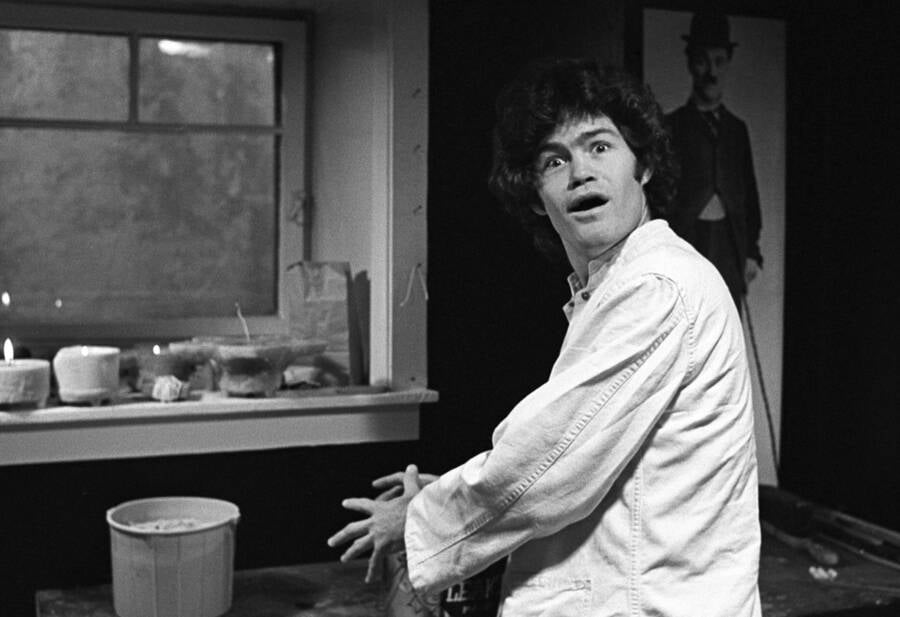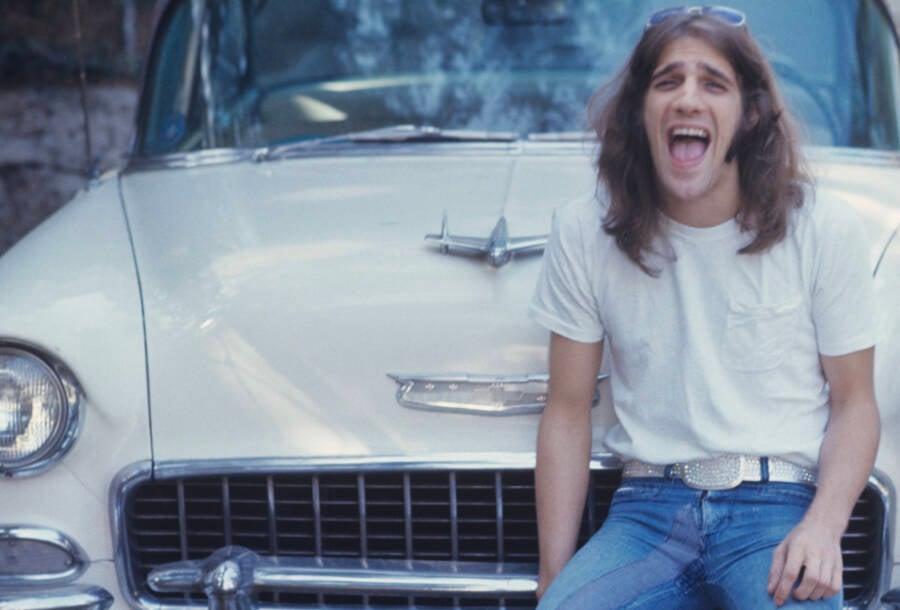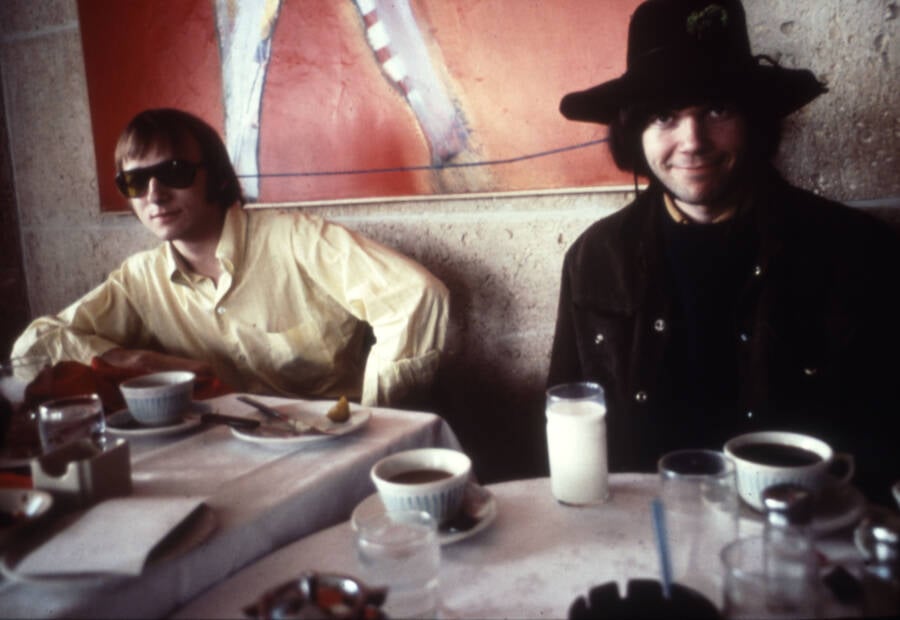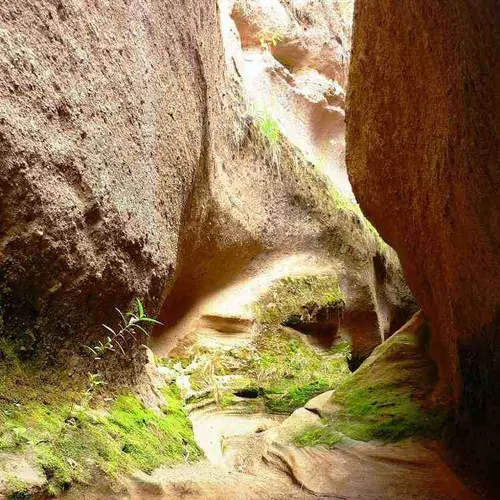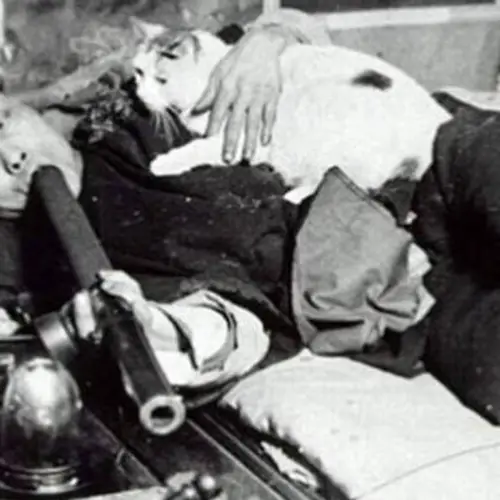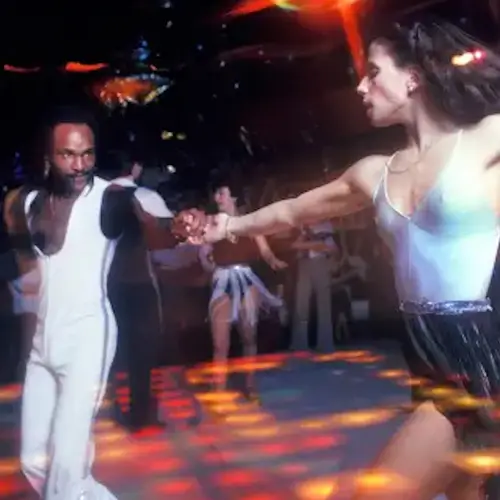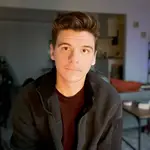See 44 vintage photos of when Laurel Canyon was the epicenter of Los Angeles' counterculture in the '60s and '70s.
Back in the 1960s, Laurel Canyon was a central hub of the burgeoning counterculture movement, a home and gathering place for some of the most prominent musical artists of the decade. This picturesque, mountainous neighborhood in the Hollywood Hills brought together artists like David Crosby, Stephen Stills, Graham Nash, Joni Mitchell, and Brian Wilson, leading to some of the most defining songs of the 1960s and 1970s.
Laurel Canyon was less expensive than other fashionable neighborhoods in the area, yet still convenient. It was a short drive to the Sunset Strip and other key Los Angeles hotspots, but secluded enough that it felt like a necessary escape from the Hollywood noise. In other words, it was the perfect place for a group of rising musicians looking for inspiration.
“In the Laurel Canyon scene, we were in the very center of this beautiful bubble of creativity and friendship and sunshine and sex and drugs and music,” Graham Nash said of his experience there.
This combination of big personalities also brought with it a fair amount of interpersonal drama, which in turn inspired iconic songs that continue to captivate to this day. The Laurel Canyon countercultural scene was certainly messy and chaotic, but that chaos ultimately became the basis for a movement that was, at its core, about rejecting the established order.
How Laurel Canyon Developed Its Counterculture Music Scene
No one could really put into words why they were drawn to Laurel Canyon, but by the late 1960s, the woody, mountainous neighborhood had attracted musicians and singers from all over. The Eagles' Glenn Frey tried to explain it in an interview with Vanity Fair, saying, "There was just something in the air up there... It was a little magical hillside canyon."
Even before then, Laurel Canyon had been a haven for bohemian, Beatnik types like Robert Mitchum. It was as if it called out to unconventional people. In the 1960s, that meant hippie, stoner types who grew their hair long, smoked marijuana, and believed in free love.
As Joni Mitchell described her experience moving to Laurel Canyon in 1968:
"When I first came out to L.A., my friend [photographer] Joel Bernstein found an old book in a flea market that said: Ask anyone in America where the craziest people live and they'll tell you California. Ask anyone in California where the craziest people live and they'll say Los Angeles. Ask anyone in Los Angeles where the craziest people live and they'll tell you Hollywood. Ask anyone in Hollywood where the craziest people live and they'll say Laurel Canyon. And ask anyone in Laurel Canyon where the craziest people live and they'll say Lookout Mountain. So I bought a house on Lookout Mountain."
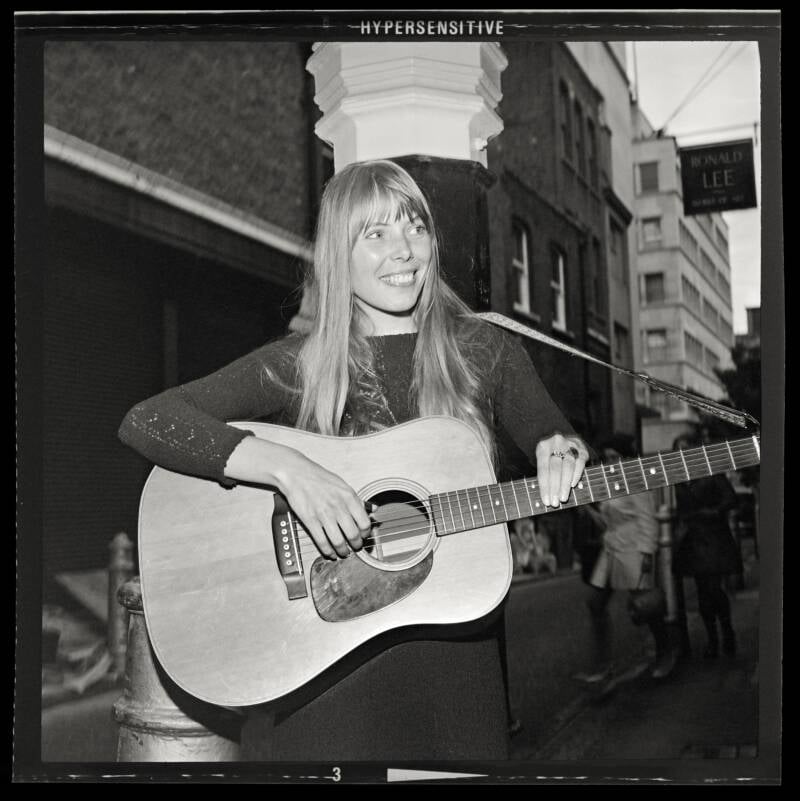
From Original Negative/Alamy Stock PhotoInfluential singer-songwriter Joni Mitchell was a core part of the Laurel Canyon counterculture scene.
Mitchell wasn't the only person to feel the pull of the canyon. Frank Zappa bought a home there in the late 1960s as well. Former Byrds bassist Chris Hillman wrote "So You Want to Be a Rock 'n' Roll Star" there in 1966. Michelle and John Phillips of The Mamas & the Papas had lived there in 1965.
Their bandmate, Cass Elliot, had even been described as "the Gertrude Stein of Laurel Canyon" because she played host to so many of the wayward souls who passed through — including Graham Nash, who was just starting to play with future bandmates David Crosby and Stephen Stills.
Everyone spent a great deal of time at everyone else's house, but there was one other location in the canyon that proved to be central to the scene: a venue known as the Troubadour. Nearly everyone had played at the Troubadour and hung out there when they weren't on tour, despite the "Draconian contracts" that the club's owner, Doug Weston, made them sign. Still, it was a great way to meet other musical artists, and as Bonnie Raitt said, "As a woman, it was great because you didn't have to make a date; you could just show up and all your friends would be there."
The community that formed was highly collaborative and encouraging, if somewhat complicated and tangled. Relationships formed and fell apart, and over time, what had once been a nearly utopian, communal existence became tainted by both massive success and unthinkable tragedy.
How The Golden Days Of Laurel Canyon Came To An End
The summer of 1969 delivered a shocking blow to the hippie movement. While he wasn't a Laurel Canyon local — more of a fringe outsider — Charles Manson had become synonymous with the lifestyle. When his cult, the Manson Family, committed a series of brutal murders that summer, it cast a dark shadow over the entire hippie scene.
Combined with the violence at the Altamont Free Concert that same year, it was clear that the movement's peaceful message had gotten lost along the way. Even Laurel Canyon was no longer immune to the fallout. Meanwhile, its residents had also started to find more mainstream success, and with that came an inclination to keep things closer to the chest.
"As people became very, very successful the camaraderie changed," Asylum Records co-founder Elliot Roberts said. "People started guarding their songs. You didn't want to give up one of your melodies to somebody else."
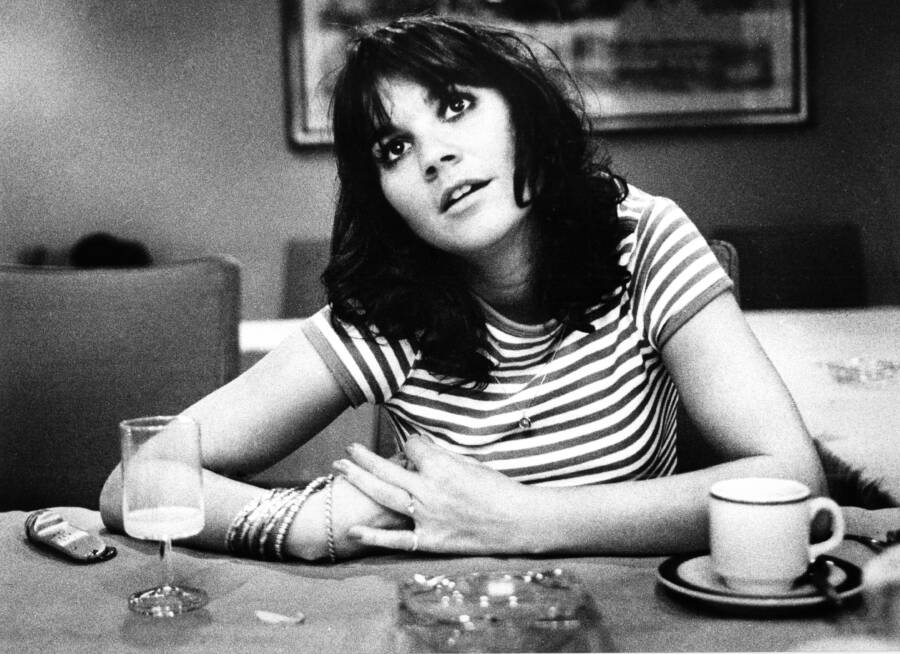
Gijsbert Hanekroot/Alamy Stock PhotoLinda Ronstadt, a figure in the Laurel Canyon counterculture scene, pictured in the Netherlands in 1976.
Short-lived romances and dramatic affairs only added to the breakdown of Laurel Canyon's collaborative environment. David Crosby's brief romance with Joni Mitchell, for instance, left him heartbroken — but also inspired his self-professed "best song" in "Guinnevere," according to Far Out magazine.
Her subsequent relationship with Graham Nash was similarly heartbreaking and inspirational. "She touched my heart and soul in a way that they had never been touched before," Nash reflected. Just as things were getting serious, though, Mitchell packed her bags, set off for Europe, and ended things with Nash via a telegram. "If you hold sand too tightly in your hand," she wrote to him, "it will run through your fingers."
Michelle Phillips' various affairs likewise helped lead to the deterioration of The Mamas & the Papas, and the band split for good by 1969. Perhaps it was inevitable that things would turn out the way they did. This was, after all, a small community of young, attractive people in a post-birth control, pre-AIDS world, spending their days getting high and serenading one another.
"Everybody slept with everybody," Jackson Browne said. "It was a time of sexual revolution and pre-AIDS. But it wasn't pre-venereal disease; we had a soft spot in our hearts for the free clinics."
Today, Laurel Canyon is fondly remembered as an important hub for American music in the 1960s and 1970s, despite the interpersonal drama that at times overshadowed that music. Many of the musicians and singers who worked together in this mountain town went on to write some of the most defining songs of their era, establishing a legendary legacy.
After this nostalgic look back at the counterculture scene of Laurel Canyon, learn all about the Hippie Trail, the counterculture journey through the Middle East in the 1970s. Then, see photos of San Francisco in the 1960s.
